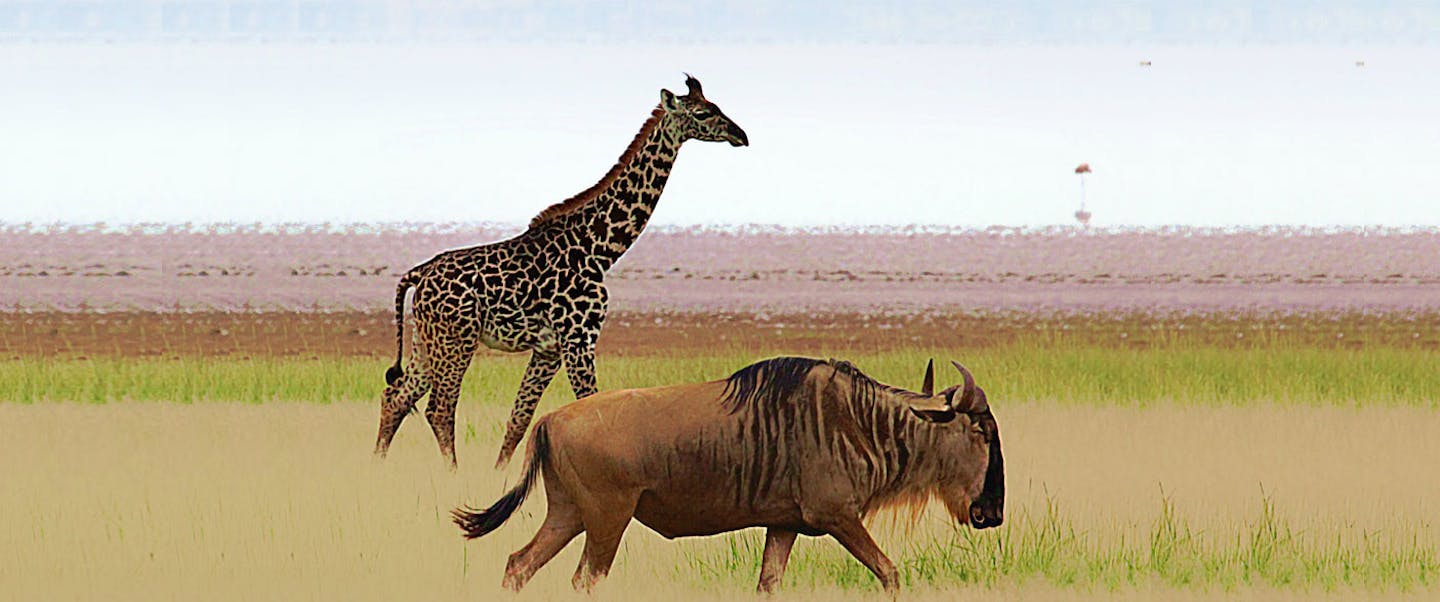Tanzanian community wildlife management areas are successfully conserving wildlife
Community-based natural resource management is a grassroots conservation tool that has become one of the dominant paradigms of natural resource conservation worldwide. In Tanzania, efforts to decentralize wildlife management to local communities occur through the creation of Wildlife Management Areas, where several villages set aside land for wildlife conservation in return for the majority of tourism revenues from the area. Nineteen Wildlife Management Areas are currently operating, encompassing 7% (6.2 million ha) of Tanzania’s land area, with 19 more planned.
In a paper published this week in the Journal of Wildlife Management, Dr. Derek E. Lee from Penn State University and the Wild Nature Institute documented significantly higher densities of wildlife in a community Wildlife Management Area relative to an unprotected control site.
Tanzania’s wildlife resources are among the finest in the world, including the last intact fully functioning savanna wilderness ecosystems in Africa with the largest terrestrial mammal migration and a high density of big game. According to the World Travel and Tourism Council, tourism in Tanzania generates around USD $6 billion annually. Tourism brings in 25% of the county’s foreign exchange earnings and regularly surpasses the minerals and energy sectors. Tourism represents 13% of Tanzania’s total GDP, and employs around 700,000 people directly and 1.5 million people indirectly.
Dr. Philp Muruthi, Senior Director of Conservation Science for the African Wildlife Foundation said, “It is very gratifying to see the positive role of community conservation areas in saving Africa’s endangered and declining species. Clearly to save the giraffe will take more than the formal national parks. And the benefits to the species and landowners are immense into the future.”
However, profitable wildlife resources are threatened by human and economic forces. There is higher human population density and higher incidence of poverty around protected areas relative to other rural communities, and the rural poor around protected areas depend on bushmeat for the majority of protein in their diets. Additionally, there are complex and non-intuitive interactions among wildlife ecology, the tourism economy, agricultural production, and infrastructure development that complicate the perceived tradeoff between wildlife conservation and human economic development.
A World Bank bioeconomic analysis found that ostensibly positive economic developments such as higher-intensity tourism, mining, road development, and agriculture which degrade existing wildlife resources would result in an overall loss to the Tanzanian economy. Although most community-based natural resource management programs have only limited success at achieving both conservation and human development goals, the concept appears to be the best opportunity for Tanzania to retain its place as one of the most famous and profitable wildlife tourism destinations while also sustainably developing other economic sectors and alleviating rural poverty.
Wildlife Management Areas can also play an important role in maintaining migratory habitat for wildebeest, zebra, oryx, eland, and gazelle. The Tarangire Ecosystem, which includes Burunge Wildlife Management Area, hosts one of the last three long-distance wildebeest migrations remaining in the world, and Wildlife Management Areas conserve landscape connectivity and freedom to roam for highly mobile wildlife and Maasai livestock keepers.


